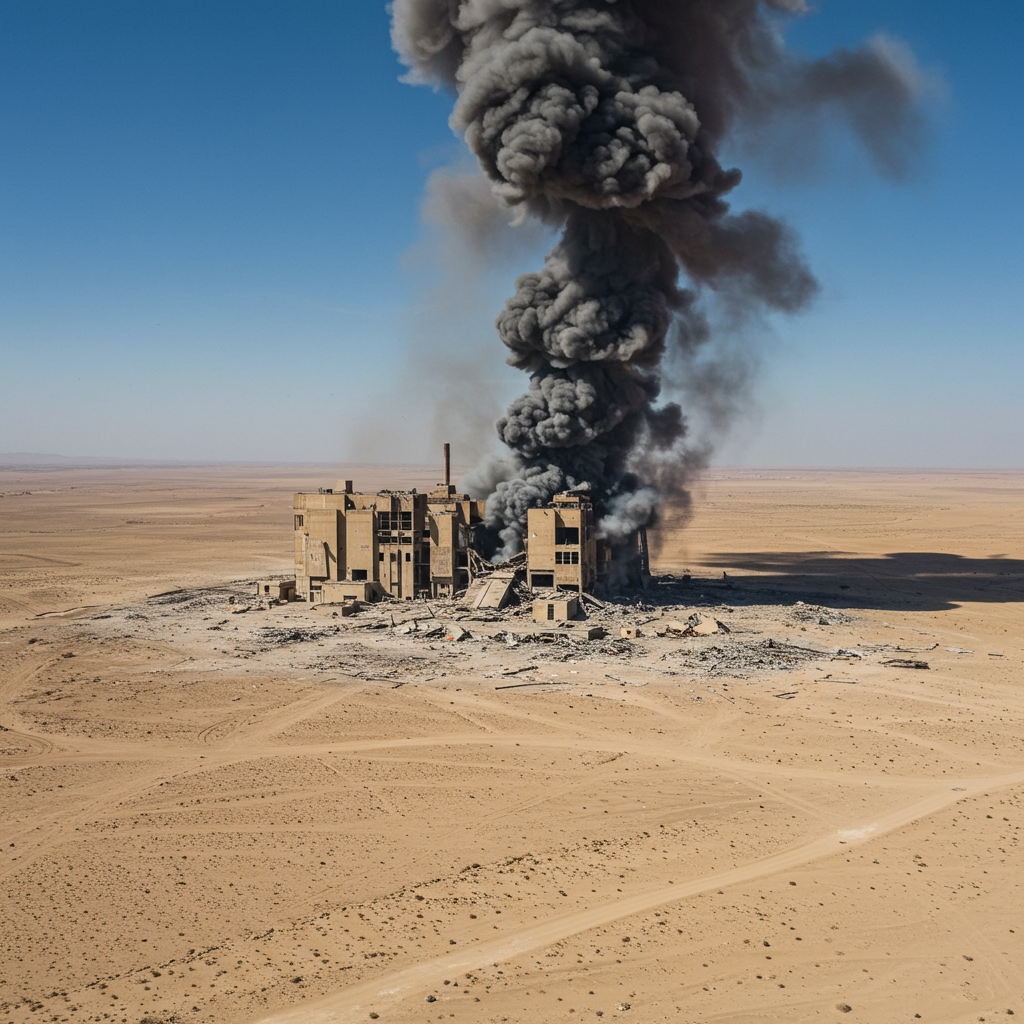Recent tensions between Israel and Iran dramatically escalated on Thursday, June 19, 2025, as Israeli airstrikes targeted Iran’s Arak heavy water reactor. This facility, located approximately 250 kilometers (155 miles) southwest of Tehran, has long been a focal point of international concern due to its potential role in Iran’s nuclear program.
Arak Reactor: A Key Target
Much international attention on Iran’s nuclear activities centers on uranium enrichment, but experts also closely monitor sites like the Arak reactor. Unlike facilities focused on enriching uranium, a heavy water reactor utilizes heavy water as a coolant and moderator and can produce plutonium as a byproduct. Plutonium is another fissile material that can be chemically separated and used to build an atomic bomb, offering an alternative pathway to nuclear weapons development distinct from highly enriched uranium.
Historically, heavy water reactors were a common route for countries pursuing nuclear weapons before centrifuge technology became widely adopted. Several states believed or known to possess nuclear arms, including India, Pakistan, and Israel itself, operate heavy water reactors.
The Strike and Its Aftermath
Iranian state television confirmed the Israeli attack on the Arak facility, reporting that at least two projectiles struck the compound. Despite the strike, Iranian officials stated there was “no radiation danger whatsoever,” asserting that the facility had been evacuated prior to the attack. Satellite imagery from Maxar, dated June 18, 2025, reportedly captured the reactor building both before and after the airstrikes.
The Israeli military claimed its fighter jets specifically targeted the reactor core seal, a critical component, to prevent the facility from being restored and used for plutonium production necessary for nuclear weapons development. Black-and-white footage released by Israel reportedly showed a bomb impacting the reactor’s dome, causing a large plume of fire and smoke. Israel had issued a warning on social media hours before the strike, urging the public to avoid the area around the Arak facility.
The International Atomic Energy Agency (IAEA), the United Nations’ nuclear watchdog, confirmed that because the Arak reactor was not operational and contained no nuclear material, the strike posed no risk of radiological effects to the public. However, the IAEA has repeatedly cautioned against the military targeting of nuclear sites, whether in Iran or Ukraine, due to inherent risks. The agency also noted it had no information regarding whether a nearby facility used for heavy water production was hit.
Plutonium Pathway Concerns
Iran began its secret military nuclear program after the devastating war with Iraq in the 1980s, initially seeking to purchase a heavy water reactor abroad. After being denied by four nations, Tehran decided to build its own. While Iran later prioritized uranium enrichment as the primary driver for its program, the Arak reactor project continued, though the facility reportedly never went online with nuclear fuel.
Under the 2015 nuclear deal (Joint Comprehensive Plan of Action – JCPOA) with world powers, Iran agreed to redesign the Arak facility to alleviate proliferation concerns. This included steps like pouring concrete into part of the reactor, work that was never fully completed. Following the U.S. withdrawal from the JCPOA in 2018, the Arak reactor became a renewed point of contention. An Iranian official claimed in 2019 that Tehran had acquired parts to replace the section that had concrete poured into it, suggesting a potential intent to reverse aspects of the redesign.
Furthermore, restrictions imposed by Iran on inspectors have led the IAEA to state that it has lost “continuity of knowledge” regarding Iran’s heavy water production and stockpile, making it difficult to fully verify the quantities held. The IAEA last reportedly visited Arak in May 2025, but this restricted access hinders comprehensive monitoring.
Escalating Conflict: Strikes on Two Fronts
The Israeli strike on Arak occurred amidst intense, ongoing hostilities. On the same day, Iran launched its own missile attacks against Israel, hitting a hospital in southern Israel and residential areas near Tel Aviv. An Iranian missile struck the Soroka Medical Center in Beersheba, causing dozens of minor injuries and damage, though the hit section was reportedly evacuated beforehand. Another missile struck a high-rise building near Tel Aviv. Israeli officials reported a total of 271 people wounded across these attacks, with four sustaining serious injuries.
Israel also warned its public about a new threat involving Iranian “dispersal munitions,” a type of missile designed to release numerous smaller bomblets over a wide area, potentially causing damage across a five-mile radius.
Following these attacks, Israeli leaders vowed to intensify strikes on Iranian military and government targets. Israel’s Defense Minister accused Iran of “war crimes” and stated the Supreme Leader would be held accountable, advocating for increased attacks on symbols of the Iranian regime. Prime Minister Netanyahu also condemned the attacks, promising to “exact the full price,” although his public stance on regime change as an explicit war goal has appeared more nuanced than that of his defense minister.
Political Fallout and International Stakes
The conflict, now in its seventh day, has seen significant exchanges, with Israeli strikes targeting various Iranian nuclear sites, including the Natanz enrichment facility, centrifuge workshops, and a site in Isfahan, alongside Arak. These attacks have reportedly resulted in casualties, including Iranian generals and nuclear scientists. Iran’s retaliation has involved hundreds of missiles and drones, causing dozens of casualties in Israel.
The potential for further escalation remains high. The United States is deliberating its level of involvement, with President Trump reportedly setting a two-week deadline to decide whether to join Israel’s efforts to destroy Iran’s nuclear program, particularly focusing on the deeply buried Fordow facility which requires specialized “bunker buster” bombs that Israel reportedly lacks. While strike plans exist, the possibility of last-minute negotiations with Tehran is also being considered.
Iran has warned the US against direct military involvement, with the Supreme Leader threatening “irreparable damage.” Iranian forces have reportedly moved missiles, and officials are considering options like potentially closing the Strait of Hormuz, a vital global oil transit route.
Amidst the crossfire, global calls for de-escalation continue, while practical impacts include countries preparing to evacuate citizens and Israel’s main airport remaining closed since the initial strikes. Hospitals in Israel have activated emergency plans, moving patients and services underground in anticipation of further attacks. The strike on the Arak reactor underscores the ongoing, dangerous dynamic of nuclear proliferation concerns intertwined with escalating regional conflict.




